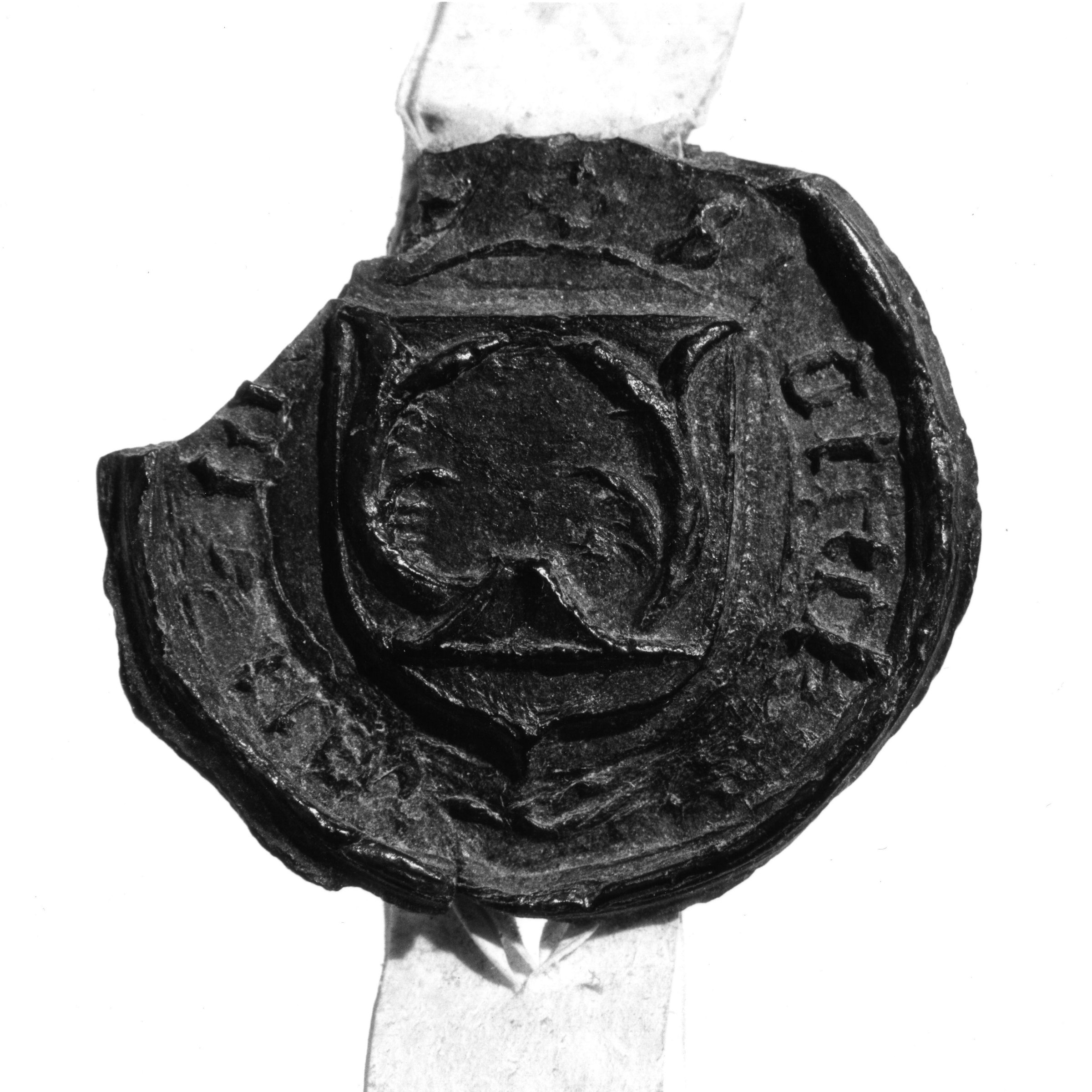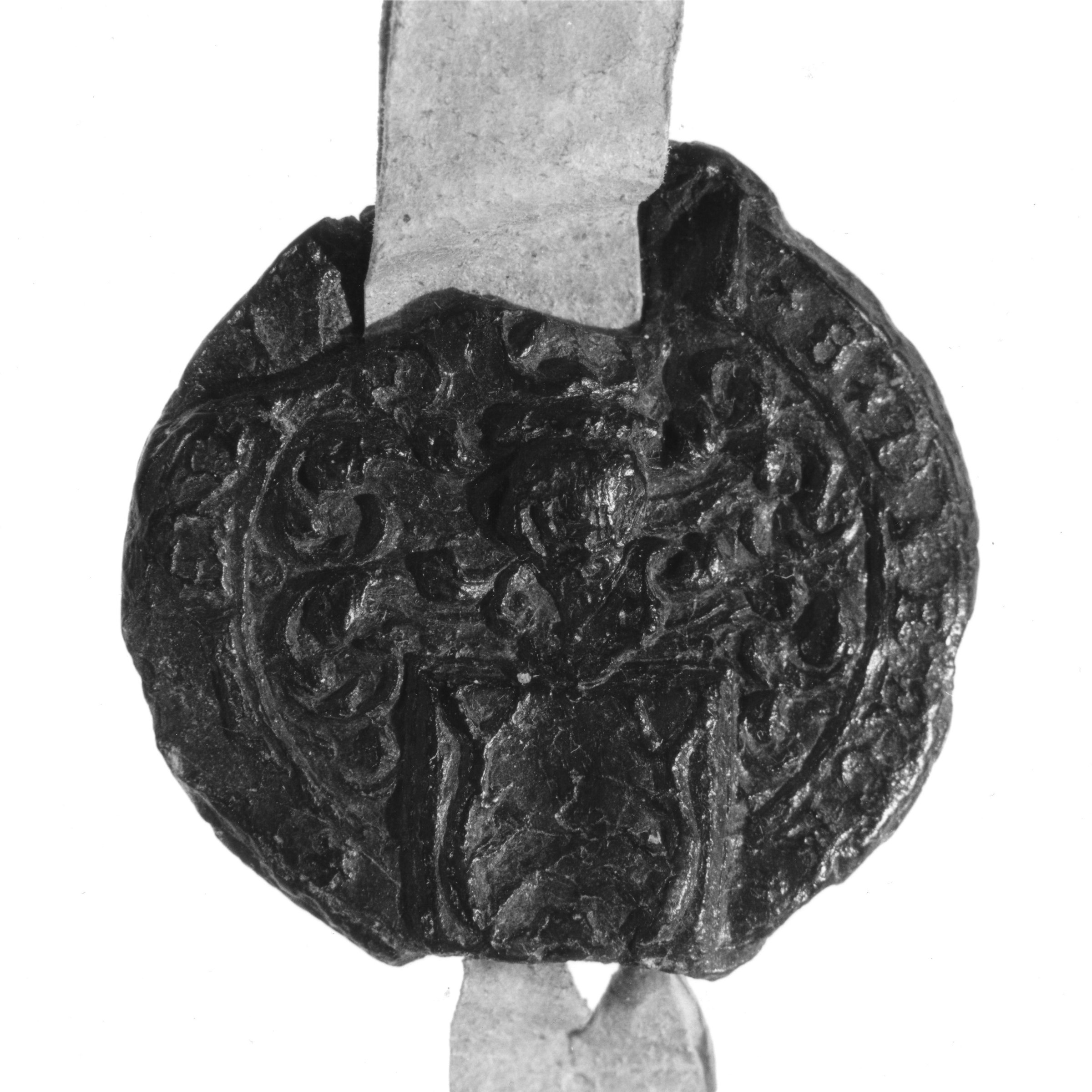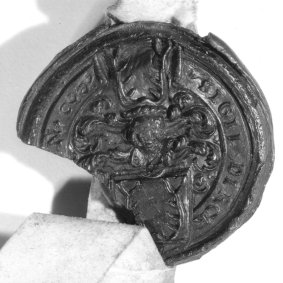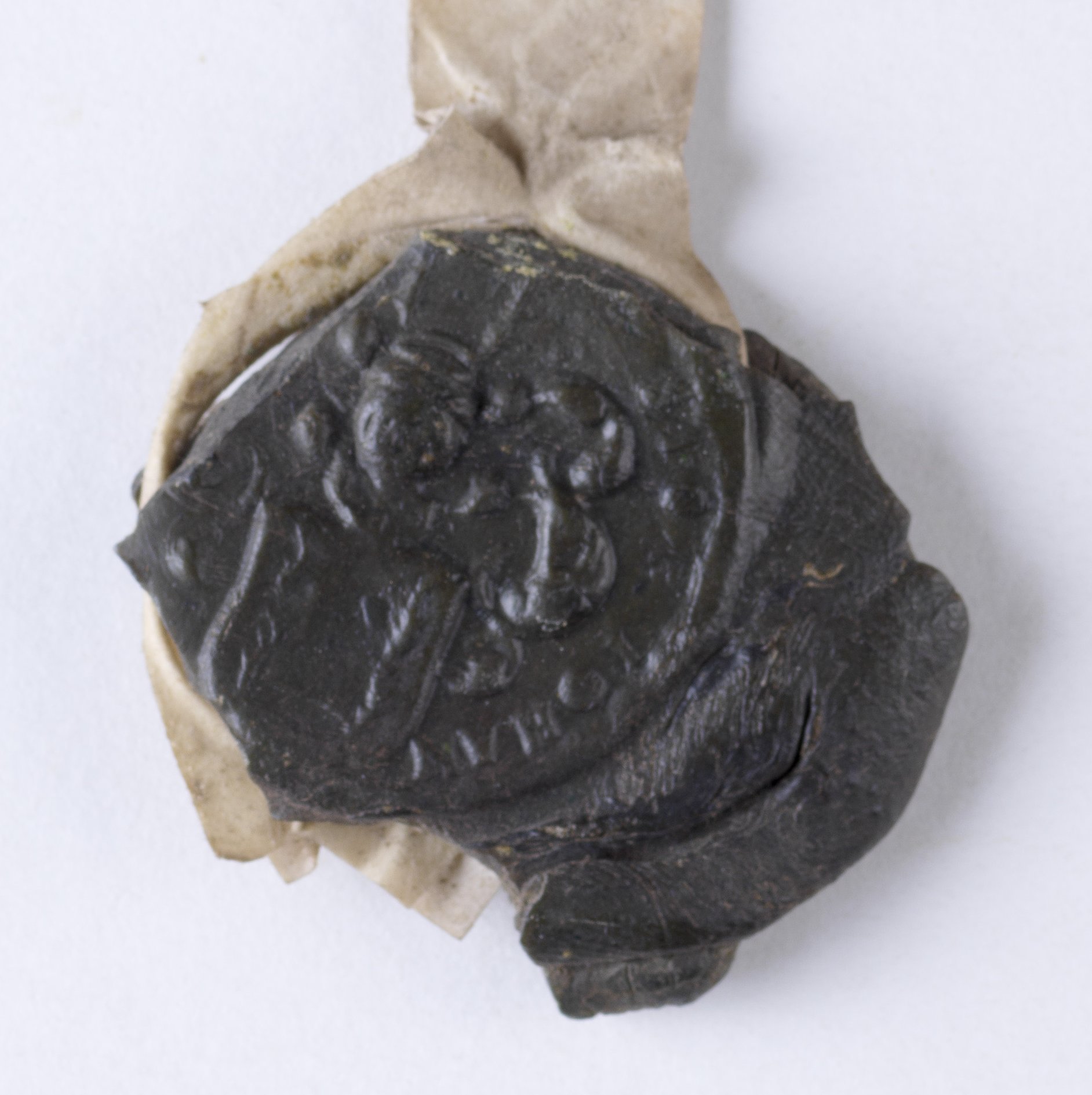| The Beijen/Beyen Family Site by Laurens Beijen |
 |
|
The homepage The overview of the site The next page The previous page |
The list of first names The photo gallery Searching this website Comments or questions |
|
"Do we have a coat of arms?" This question is often asked of family researchers. In the top-so many of the most frequently asked questions, he follows directly on the absolute leader: "How far are you back already?"
For the Beijen/Beyen families, the answer to that first question is: In the IJsselstein family there is indeed a coat of arms; in the Nieuwkapelle, Breyell and Hengelo families, as far as we know, none. What are coats of arms?The use of family coats of arms dates back to the Middle Ages: noblemen wore a badge during battle because otherwise they would not be recognizable to their allies in their armor and helmet. Gradually, families began to use the same symbol or combination of symbols from generation to generation. These symbols were later also used on the seals with which official documents (deeds or charters) were sealed. That happened because in those days even noblemen usually could not write and therefore could not sign. So did others, which is why the use of family coats of arms extended to other prominent families.In the Netherlands, the coats of arms of noble families are established by royal decree and registered with the Hoge Raad van Adel (High Council of Nobility). Other family coats of arms, whether they have been used for centuries or were recently designed, can under certain conditions be included in the coat of arms register of the Central Bureau for Genealogy or in other registers. However, such a registration has no formal significance. A coat of arms is therefore linked to a family and not to a surname. You cannot tell from someone's name what their coat of arms looks like. It must always be checked whether the person concerned indeed belongs to the family in which the coat of arms is used. There are companies that dare to offer images of family coats of arms for sale without having done any research into the family relationships of those involved. In many cases these are weapons of completely different families. Wax seals with the coat of arms of the IJsselstein Beijen familyBelow is a photo of the oldest known image of the coat of arms of the IJsselstein Beijen family. It is the seal of the IJsselstein alderman Dirck Jansz. who was discussed on the page about the first Beijen's in IJsselstein. This seal is attached to a charter of bailiff and aldermen of IJsselstein of February 2, 1530. Deer antlers can be recognized on the seal.The second picture shows a seal from 1617 of Dirck Jansz. Beijen, who is discussed on the page named after him. He was most likely a grandson of Dirck Jansz. from 1530. The seal shows the same deer's antlers, but then as part of a complete coat of arms with mantle and helmet sign. The next photo is of a wax seal from 1664 by Dirck Gijsbertsz. Beijen, who is mentioned on the page about Dirck Gijsbertsz. Beijen and his wives. He in turn was a grandson of Dirck Jansz. Beijen from 1617. The fourth photo is from 1711. The owner was Hendrik Beijen (1657-1726). He was a son of the aforementioned Dirck Gijsbertsz. Beijen. Like the aforementioned relatives, he was a long-time member of the IJsselstein city council. The fifth photo is of a seal from 1734. It belonged to Johan Franco Beijen I, who was mentioned on the page Johan Franco I, friend of the Bohemian Brethren. He was a grandson of Dirck Gijsbertsz. Beijen. The sixth photo in this series comes from a deed of the bailiff and aldermen of IJsselstein dated 7 January 1779, when Johan Franco Beijen II was alderman. He is discussed on the page The Johan Franco's II and III. This seal is made of red wax; the other seals shown before this one are black. There are seven generations spanning 250 years between Johan Franco II and Dirck Janszoon, the owner of the 1530 wax seal. The two seals below belong to a collection of wax seals of the Central Bureau for Genealogy (CBG) in The Hague. These seals, marked "Beyen" or "Beijen" by the collector, bear a clear resemblance to the seals above. They must come from the seventeenth or eighteenth century, but a more precise date is difficult to give. In contrast to the seals above, these seals don't have a lettering on the edge. 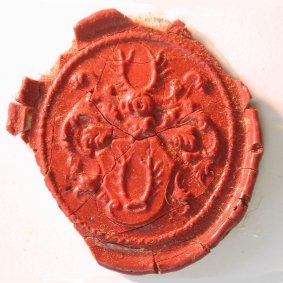 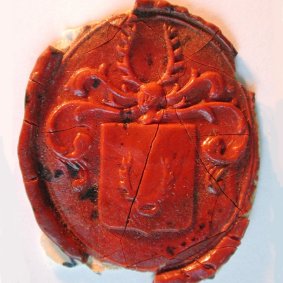 A particular wax stamp from the IJsselstein familyAnna Maria (Ans) Scholten Beijen Roghair, who was born in 1919, was a member of the Johan Franco branch (13.18). She passed away in 2017 in Spain. In her estate was an old silver tube or cutter. It is 15 cm long, and the diameter is 2 cm in the middle and 2.5 cm at the foot. Such tubes were used by gentlemen from well-to-do circles to carry small utensils: ear spoons, pipe cleaners, pipe stoppers and the like. The coat of arms of the Beijen/Beyen family from IJsselstein is engraved at the foot of the tube. This means that the cutter can also be used as a wax stamp by pressing it into hot sealing wax. A comparison with one of the seals from the collection of the CBG (shown again below) shows that this seal was almost certainly made with this stamp.
 According to Norbert Biezen, an expert on silver cutters, this copy is clearly recognizable as originating from the mid-eighteenth century, between 1740 and 1770. The style of the coat of arms is Rococo/Louis XV. This also matches the sleek shape of the tube.
Other images of the coat of arms of the IJsselstein family The coat of arms with the deer's antlers does not only appear on wax seals. In the past there was a panel with family coats of arms in the Jacobi Church in Utrecht in memory of Godfried van der Schuer, who died in 1687. He was a grandson of Dirck Janszoon Beijen from IJsselstein. The panel showed eight coats of arms that were supposed to refer to Van der Schuer's great-grandparents. The panel disappeared in the time of the Batavian Republic (around 1795), but a drawing from the early eighteenth century has been preserved. On the left is the display of the Beijen family coat of arms on the panel. The antlers were black, the background yellow.  There is also an even older paper version of the coat of arms with the deer antlers. An early seventeenth-century Utrecht manuscript by Aernout van Buchel contains an image of the coat of arms of Adriana Beijen, who died in Utrecht in 1623 and was buried in IJsselstein. Adriana was a sister of Dirck Janszoon Beijen and the widow of first Jacob van Telshout and afterwards Geerlof Cluijt van Voornbroeck. It was customary at the time to use a diamond-shaped shield for women. In the composite coat of arms, the Beijen family coat of arms can be found at the top right. Rietstap's Arms BookIn the second half of the nineteenth century the Dutchman J.B. Rietstap published a heraldic standard work: the "Armorial Général". In the second edition (1884-1887) he gave descriptions in French of some 100.000 coats of arms from the Netherlands and other countries. In later years pictures (called "Planches") of the coats of arms that were described by Rietstap were published by Victor Rolland and his son Two coats of arms of a Beyen family were recorded (this could also mean Beijen, Rietstap and Rolland always replaced ij by y). They are shown in the pictures above. On the left picture the pair of deer's antlers of the IJsselstein family is easily recognizabl . The coat of arms on the right picture shows (according to Rietstap's description) at the top a white walking ferret on a blue background and at the bottom a green reversed branch of a strawberry plant with three red fruits on a white background. Unfortunately it is unknown where Rietstap saw this coat of arms. Because of the social position of the extinct Dordrecht family it seems most probable that this coat of arms belonged to that family. A small additional argument for this assumption: the animal that was seen by Rietstap as a ferret could be meant as a weasel (in Dutch "wezel"), and the ancestor of the Dordrecht family lived for many years in the German city of Wesel. A painting from 1824 with the family coat of armsIn 1999 I received from Willem F.G.L. (Wim) van Beijma Esq. from Clarens (Switzerland) a small painting on paper from 1824 with the family coat of arms of the IJsselstein family. The painting refers to the IJsselstein physician and burgomaster Johan Franco Beijen III (1773-1842).Wim van Beijma (1910-2003) was a great-grandson of Johan Franco III through his son Hendrik J.R. Beijen, his daughter Maria J.F. Beijen who was married to Eduard Marius van Beijma, and their son Julius Matthijs van Beijma. 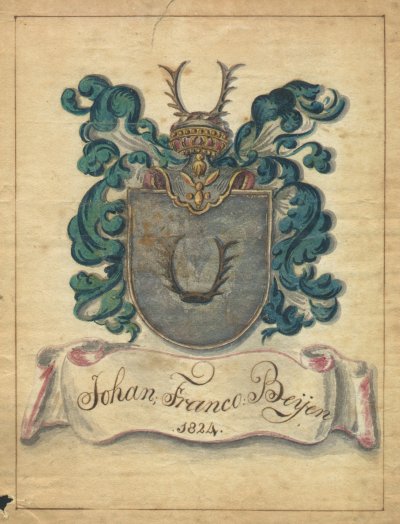 Above is an image of the painting. Unfortunately, the edges have been somewhat damaged over the years, and the paint on the coat of arms (which must have been gold-colored) has largely disappeared. The current version of the coat of arms of the IJsselstein familyIn June 2010, Henk 't Jong from the Central Bureau for Genealogy made at my request a modern stylized version of the coat of arms of the IJsselstein family Beijen. He based his work on the coat of arms as it appears on the painting from 1824, on the other images mentioned above and on the old wax seals.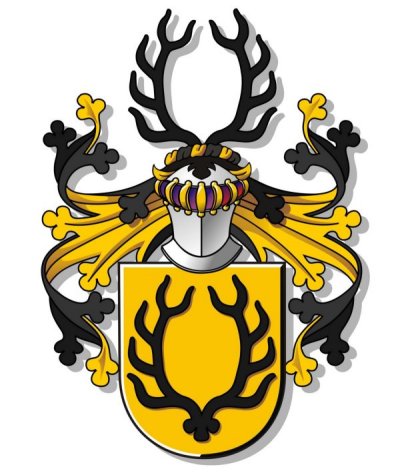 People with the name Beijen or Beyen who belong to the IJsselstein family are entitled to use this image of the family coat of arms, either only the shield or the complete version with cover and helmet sign. A contemporary signet ringPup Sophie Beijen from Baarn (Jan Thomas branch of the IJsselstein family, 17.51) received a signet ring from her parents in 2023. It was a gift on the occasion of her twenty-first birthday. The ring contains an image of the family coat of arms of the IJsselstein family Beijen.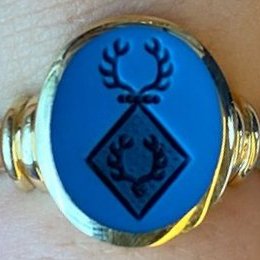 The coat of arms on the ring does not have the more usual semi-circular shape, but is diamond-shaped. That is the traditional form for unmarried women. The maker of the signet ring based it on the stylized version of the family crest shown above, which was made at my request in 2010. |
|
The next page The homepage The overview of the site |
The top of the page Searching this website Comments or questions |
